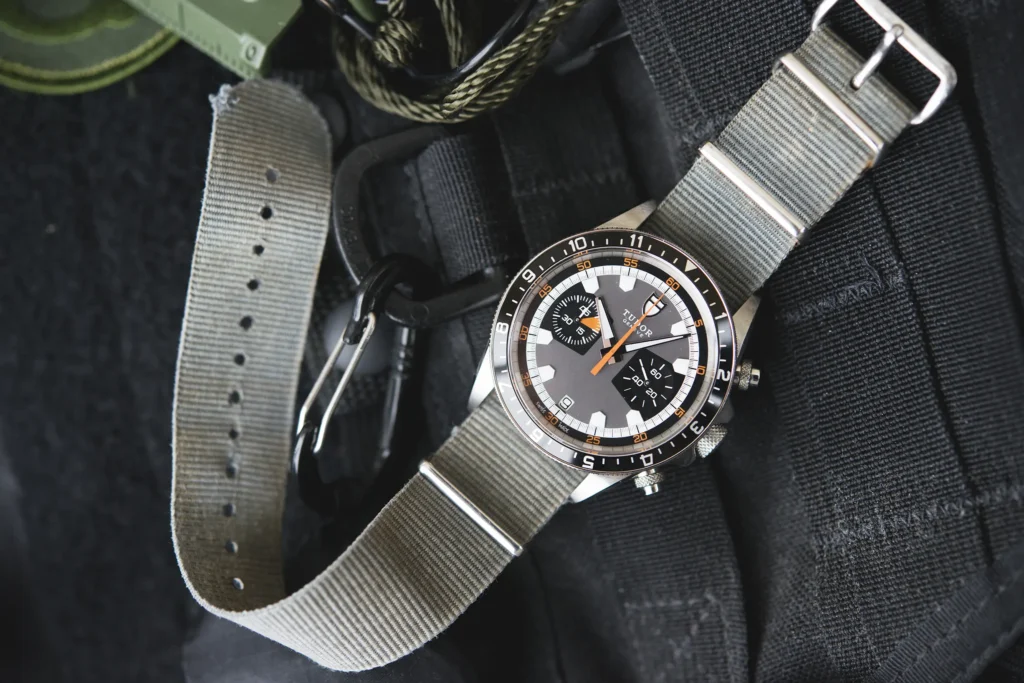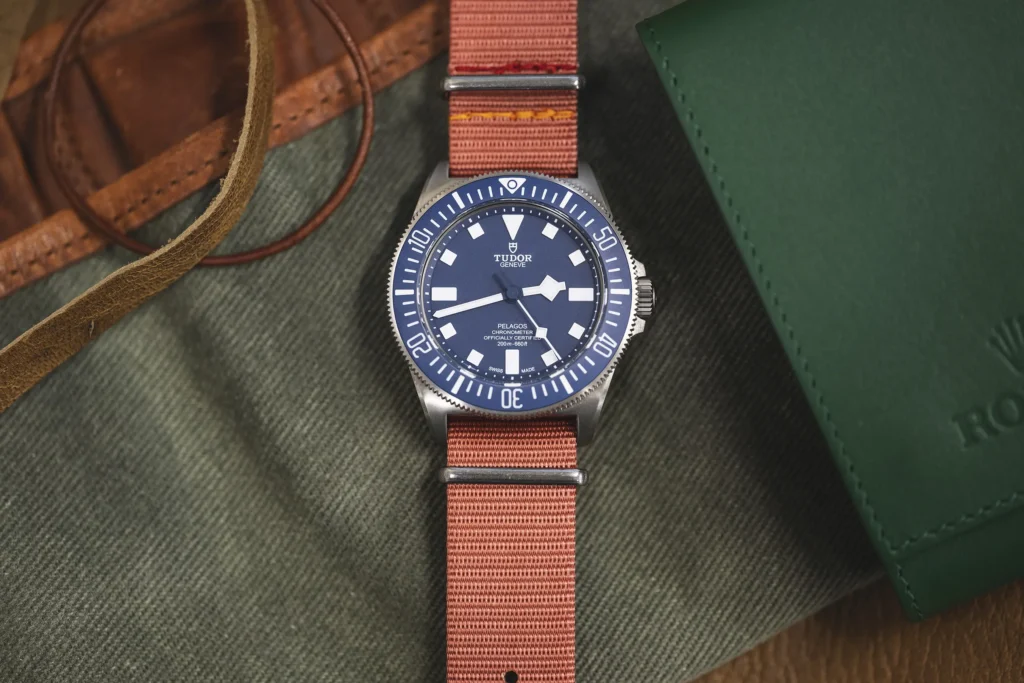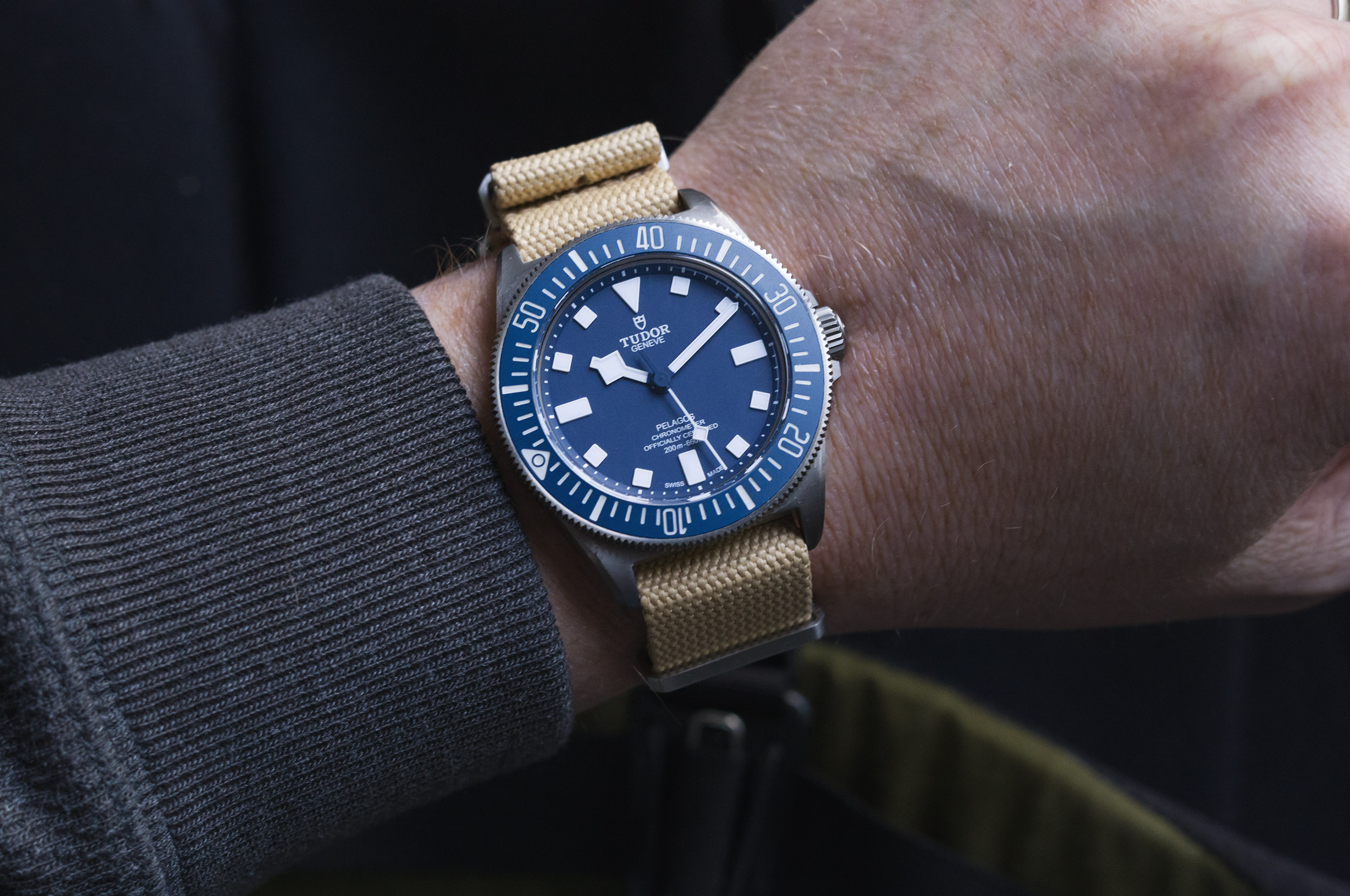How can such a humble piece of fabric hold such transformative power?
Many of the watch enthusiasts I’ve encountered share a few common traits that I’ve noticed. Not only are they a largely curious bunch, but they are also tinkerers. And if something can be customized in any way, it will be. The custom watch scene has long been thriving, with watches from Seiko to Rolex to Patek Philippe all having been the subject of someone’s creative interpretation. As polarizing as that space may be, there is one area of customization that has a far broader appeal, and that is the world of straps and bracelets. There is one type in particular that seems to elicit an emotional response unlike the others, both positive and negative, from collectors: the NATO strap.

The NATO strap has an interesting history rooted in military use dating back to the early ‘70s, but has since become a fashion statement of sorts thanks to the near infinite design possibilities, and the ease of quickly changing them out on the fly. These straps can change the personality of a watch in an instant, and are relatively inexpensive, which is why many of us have a “drawer full of them”, as we say. While some bemoan what they consider a sloppy appearance, others embrace the less formal look and vast array of aesthetic options they offer. Of course, this is entirely subjective, but there’s no denying that the qualities of a NATO strap have brought many a newcomer to the space.
As with most things in the watch world, the NATO strap serves a practical function. For service members needing a watch, the NATO strap (or G10 as they were known, thanks to the G1098 form that soldiers needed to fill out in order to obtain one) was a practical and cheap option that allowed a precise fit, and had the added benefit of a fail safe for errant spring bars. That small additional piece of fabric that runs under the watch ensures the watch head will remain attached even if one spring bar fails. Each of these benefits are just as relevant for civilians enjoying their watches to this day.

But that’s not the full reason for the NATO strap’s popularity these days. While certainly an added benefit, the biggest draw is the sheer breadth of options available in creating the straps, allowing wearers to dial in a specific look and feel to the heart’s content. From how the material is treated and finished, to what the material is in the first place, these straps can take on just about any look you’re going for, all without compromising the utility of the strap. Because of this, the appeal of the NATO strap has not only become more wide spread over the past decade, but that appeal branches into all manner of collector types, from high end folks, to Seiko modders, to tool watch aficionados.
I’ve always viewed a NATO strap as the equivalent of a well worn t-shirt and jeans. Comfortable, practical, and easy to use day to day. Watches may no longer be the crucial bit of kit that they once were for British soldiers, but can still be used as practical tools, and they don’t have to be shy on personality.


Comments
One response to “The Lasting Appeal of the NATO Strap”
Buying or converting my existing NATOs to single layer was the thing that fully converted me to the style. Getting that extra thickness out from underneath the watch and removing some bulk with the extra hardware on the side of the wrist makes the strap the perfect daily wearer.
Erika’s/MN style straps still win on comfort for me, though.